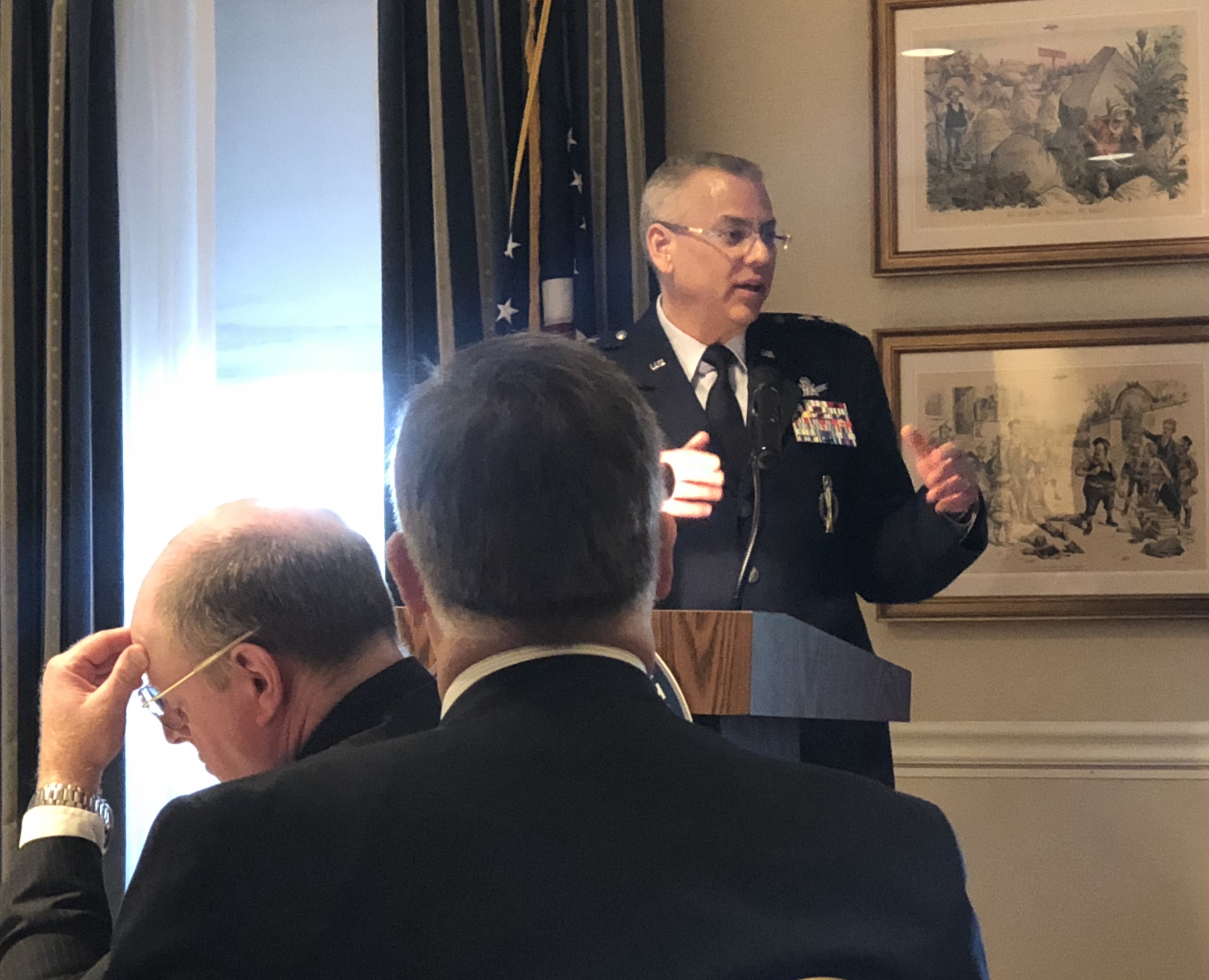
USAF Lt. Gen. Jack Weinstein, deputy chief of staff for strategic deterrence and nuclear integration, speaks at an AFA Mitchell Institute event on Capitol Hill on Tuesday. Staff photo by Amy McCullough.
The Air Force is already thinking about how it will certify its nuclear systems in a cyber environment. That’s a significant challenge considering the last time it certified such a system—the B-2 in the early 1990s—the internet didn’t exist, at least not as it does today.
“We built a plan on how to execute that because the time to worry about nuclear certification of our systems is not 2020, it’s 2018. You plan for it now,” said Lt. Gen. Jack Weinstein, deputy chief of staff for strategic deterrence and nuclear integration, during an AFA Mitchell Institute event on Capitol Hill on Tuesday.
Nuclear certification is the final step before a nuclear weapon system can reach initial operational capability. In 2017, the Air Force Scientific Advisory Board conducted a study on “Nuclear Surety and Certification for Emerging Systems,” in which the board offered several recommendations, including ensuring the Air Force Nuclear Weapons Center, Air Force Safety Center, and the NWS Program Offices were properly resourced “to support modernization.” Weinstein said once briefed, Air Force Secretary Heather Wilson gave him 30 days to complete a plan to implement those recommendations, which he did. Now the service is working to ensure it hires “the right people” in those locations, so they can start thinking about the issue sooner rather than later.
The SAB also recommended USAF place more emphasis “on the reliability element of surety” in order to “address the evolving threat to [the] USAF nuclear mission;” develop policies and procedures aimed at addressing cybersecurity in nuclear systems; and work with the National Security Agency to “develop a calculus for cyber resiliency” that includes a quantitative analysis of mission impact, among other suggestions.
Weinstein said his staff is in the process of completing the congressionally mandated Nuclear Mission Assessment, which takes a broad look at USAF’s nuclear enterprise, including how the nuclear force is trained, the proper size of the force, whether there is enough money to support the force and the ongoing modernization efforts, and what is the warfighting capability. That assessment, he said, will be presented to Wilson and Chief of Staff Gen. David Goldfein by the end of the year.
“I think it’s really healthy to take all of those items and put it together. We were already looking at them, now they are being looked at holistically,” said Weinstein.